Summer School @ Fields, Toronto, July 3-6, 2012

This page gives an outline for a Summer Research School on the Mathematics of Medical Imaging at the Fields Institute in Toronto, Ontario, Canada.
Organizer and Venue
- Fields Institute of Research in Mathematical Sciences
- Thematic Program on Inverse Problems and Imaging, January-August 2012
- Summer Research School on the Mathematics of Medical Imaging, July 3-31, 2012
- Graduate Course on Medical Image Registration, July 3-6,2012
Course on Medical Image Registration, July 3-6, 2012
This four day course gives a brief introduction to the Mathematics of Image Registration problems. The course is designed for graduate and PhD students with a solid mathematical and computer science background and an serious interest in solving medical imaging problems.
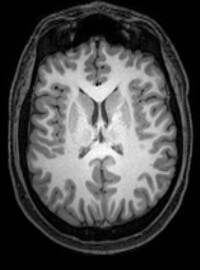
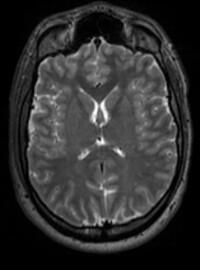
This course provides an introduction to image registration and the design of efficient and stable state-of-the-art algorithms. The conceptual backbone is a powerful variational framework. A solid mathematical analysis of this framework is presented.
This framework not only enables a deep understanding and analysis of fundamental concepts but also the synthesis and design of new problem specific algorithms. Hands-on examples are based on FAIR - Flexible Algorithms for Image Registration, SIAM, 2009 by Jan Modersitzki and the publicly available FAIR toolbox. This toolbox enables easy access to even complex schemes.
The course enables participants to use the software, explore existing registration techniques, and to design and develop new solutions for individual problems. The tutorial also covers the integration of new features like mass-preservation and hyperelasticity.
The course consists of five lectures and three tutorials with accompanying lab exercises covering the following topics:
• Introduction and motivation
• The why and how on the way from a discrete to a continuous world and backwards
• Distance measures and parametric image registration approaches
• Regularization and non-parametric image registration approaches
• Constrained image registration and an outlook
Team
- Jan Modersitzki1,2
- Lars König2
- Lars Ruthotto1

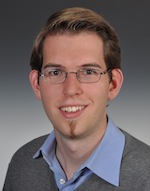
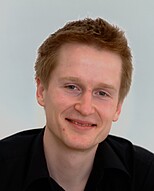
Detailed Course Content
The course provides a self-contained introduction to image registration from a variational perspective. The course also demonstrates various practical aspects using the FAIR toolbox. FAIR is a general and unified toolbox for image registration and enables participants to identify and use common components of state-of-the-art registration software. It is explained how to design application specific building blocks and how to explore and integrate these components.
Flexibility
A flexible approach to image registration based on a general variational formulation is given. A solution is characterized as a minimizer of a well-designed objective function
J[y] = D[T[y], R] + S[y],
where T and R denote the reference and template image, y is the wanted transformation, D is a distance measure, and S is a regularization. These ingredients and various configurations are discussed in detail. Particular building blocks are outlined. This outline includes interpolation options (such as linear, spline, ...), distance functionals (such as SSD, MI, NGF, ...), parametric (such as rigid, affine, spline, ...) and non-parametric transformation models and regularization functionals (such as elastic, curvature, hyperelastic, ...).
Algorithms
A numerical approach to the solution of the continuous optimization problem based on a discretize-then-optimize approach is given. Fast converging optimization schemes such as Gauss-Newton or Trust-Region methods are introduced and convergence properties are discussed. Particular emphasis is given to multi-level and multi-scale approaches.
Data Models: Images and Arrays
An introduction to medical images covers important aspects such as image interpretation, interpolation, approximation, and deformations.
Registration
The above framework covers many recent relevant registration techniques and various examples are given. The lectures address theoretical questions such as ill-posedness and appropriate regularization especially for non-parametric transformations as well as practical hints for computational realizations.
Literature
All participants will be provided with a copy of the lecture notes. The content of the tutorial is to a large extent based upon 11. Detailed information and introductions to image registration can be found in
- L. G. Brown, A survey of image registration techniques, ACM Computing Surveys 24 (1992), 325–376.
- J. M. Fitzpatrick, D. L. G. Hill, and C. R. Maurer, Jr., Image registration, Handbook of Medical Imaging, Volume 2: Medical Image Processing and Analysis (M. Sonka and J. M. Fitzpatrick, eds.), SPIE, Bellingham, WA, 2000,pp. 447–513.
- C. Glasbey, A review of image warping methods, Journal of Applied Statistics 25 (1998), 155–171.
- A. A. Goshtasby, 2-D and 3-D image registration, Wiley, New York, 2005.
- J. Hajnal, D. Hawkes, and D. Hill, Medical image registration, CRC Press, Boca Raton, FL, 2001.
- R. Highnam and M. Brady, Mammographic image analysis, Kluwer Series on Medical Image Understanding, Kluwer Academic Publishers, New York, 1999.
- D. L. G. Hill, P. G. Batchelor, M. Holden, and D. J. Hawkes, Medical image registration, Physics in Medicine and Biology 46 (2001), R1–R45.
- H. Lester and R. Arridge, A survey of hierarchical non-linear medical image registration, Pattern Recognition 32 (1999), 129–149.
- J. B. A. Maintz and M. A. Viergever, A survey of medical image registration, Medical Image Analysis 2 (1998), 1–36.
- J. Modersitzki, Numerical methods for image registration, Oxford University Press, New York, 2004.
- J. Modersitzki, FAIR: Flexible Algorithms for Image Registration, SIAM, 2009.
- J. P. W. Pluim, J. B. A. Maintz, and M. A. Viergever, Mutual-information-based registration of medical images: A survey, IEEE Transactions on Medical Imaging 22 (1999), 986–1004.
- P. A. van den Elsen, E.-J. D. Pol, and M. A. Viergever, Medical image matching – a review with classification, IEEE Engineering in Medicine and Biology 12 (1993), 26–38.
- T. S. Yoo, Insight into images: Principles and practice for segmentation, registration, and image analysis, AK Peters Ltd., Wellesley, MA, 2004.
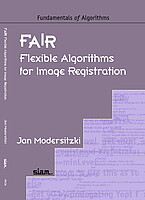
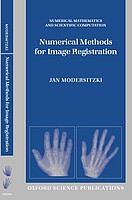

- People
- Johannes Bostelmann
- Daniel Budelmann
- Bernd Fischer
- Florian Galow
- Ole Gildemeister
- Stephanie Häger
- Stefan Heldmann
- Temke Kohlbrandt
- Sven Kuckertz
- Annkristin Lange
- Jan Lellmann
- Tanja Loßau
- Johannes Lotz
- Jan Modersitzki
- Research Interests
- Curriculum Vitae
- Publications
- Software
- Tutorials
- Fields - Toronto - 2012
- Till Nicke
- Josephine Oettinger
- Nils Papenberg
- Sofie Saier
- Kerstin Sietas
- Angela Tesdorpf
- Herbert Thiele
- Johannes Voigts
- Sina Walluscheck
- Nick Weiss
- Sonja Wichelmann


